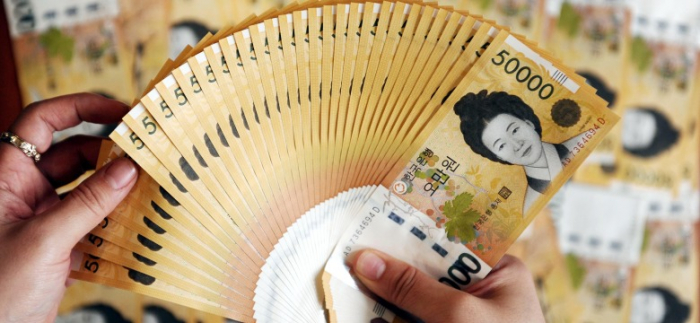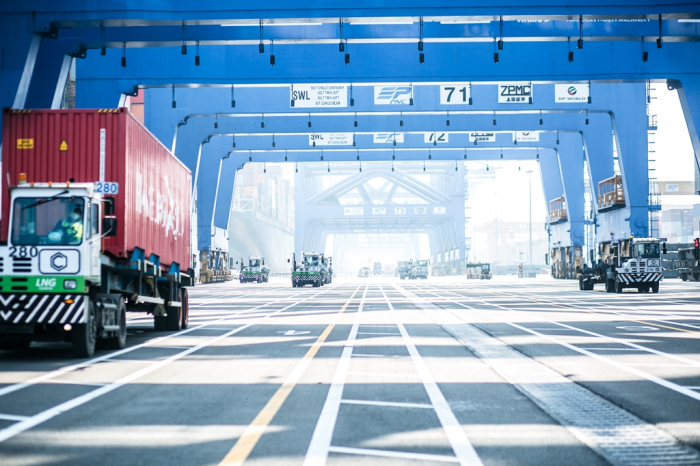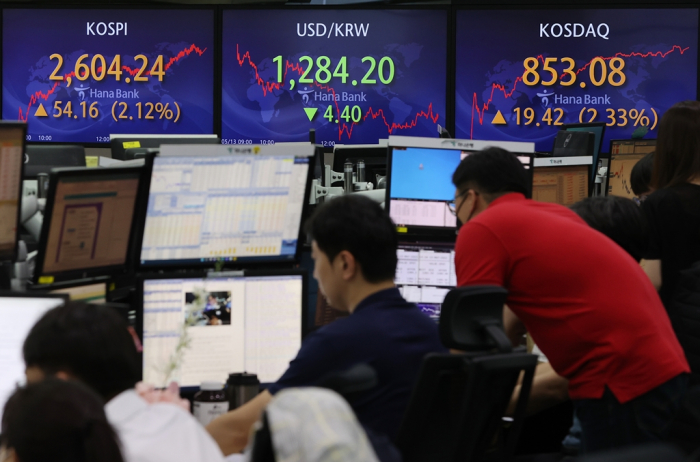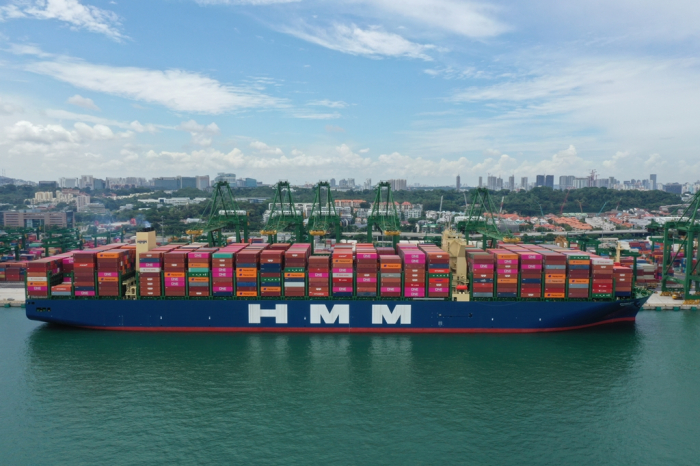Economy
Weakening won: A double-edged sword for the Korean economy
The export-driven Korean economy faces a rough road amid challenging external uncertainties
By May 15, 2022 (Gmt+09:00)
4
Min read
Most Read
LG Chem to sell water filter business to Glenwood PE for $692 million


Kyobo Life poised to buy Japan’s SBI Group-owned savings bank


KT&G eyes overseas M&A after rejecting activist fund's offer


StockX in merger talks with Naver’s online reseller Kream


Mirae Asset to be named Korea Post’s core real estate fund operator



A weakening won is usually a bonus for the South Korean economy as it strengthens the export-dependent country’s price competitiveness in overseas markets.
The recent decline in the Korean currency’s value, however, is posing a challenge to Asia's fourth-largest economy as soaring raw material prices boost import costs for local manufacturers, hurting their profitability.
The local currency, which last week tumbled to the lowest level since 2009 when Korea was in the wake of the global financial crisis, could weaken beyond 1,300 won against the US dollar in coming weeks, unless the country’s foreign-exchange authorities step in.
According to the Seoul Money Brokerage, the dollar-won pair’s year-to-date average was 1,219.32, up 6.53% from last year’s average of 1,144.6, meaning a steep decline in the Korean currency’s value.
The won has already been under pressure from expectations of the US Federal Reserve’s aggressive monetary policy tightening and concerns over a slowdown in China, Korea’s largest export market, due to COVID-19 lockdowns.
The Korean currency has also been a victim of risk aversion among investors, as the price hikes of crude oil and raw materials in the wake of the Russian invasion of Ukraine slashed local manufacturers’ profits while pushing up inflationary pressure.

CREDIT RATINGS AT RISK
Bank of Korea data shows Korea’s raw material imports were valued at $95.97 billion in the first quarter, up by $32.81 billion, or 51.9%, from the year-earlier period, due largely to higher energy prices.
The first-quarter raw material import prices were even higher than the combined value of Korea’s four major export items – semiconductors ($34.86 billion), automobiles ($11.34 billion), chemicals ($26.68 billion) and steel ($14.8 billion).
The recent sharp decline in the Korean won is also taking a toll on Korean companies, putting their credit ratings at risk.
Korea’s non-financial companies had a combined $143.1 billion in external liabilities at the end of 2021, up by $21.7 billion from a year earlier – the highest annual gain since the government began compiling such data in 1994.
A higher dollar-won exchange rate, meaning a weaker won against the greenback, leads to increased borrowing costs for Korean companies’ foreign debt.
Among the companies suffering from the depreciating won are airlines, steelmakers and chemical companies.
A 10% increase in the dollar-won rate will slash Korean Air Lines Co.'s and Asiana Airlines Inc.’s 2022 net profit by 485.3 billion won and 376.1 billion won, respectively, analysts said.

A softer won will also balloon the carriers’ interest payment on foreign borrowing. The two companies have a combined 14 trillion won in foreign debt.
In their efforts to limit foreign-exchange losses, those companies are borrowing money in relatively weak foreign currencies such as the yen and euro instead of the dollar, industry officials said.
Local exporters, notably automakers, which usually stand to gain from a weaker won, are also expressing concerns over the recent dollar-won moves.
“The rising foreign exchange rate is usually good as we can sell our products more in overseas markets. But the recent fluctuation in the currency market is worrisome as it makes it harder for us to adjust our business plans in a timely manner,” said an executive at a Korean carmaker.
JAPANESE YEN, ANOTHER RISK
Another recent development that weakens Korean exporters’ price competitiveness is Japan’s ultra-eased monetary policy.
The Japanese currency recently fell to a 20-year low against the dollar as its central bank strengthened its commitment to keep interest rates ultra-low by vowing to buy unlimited amounts of government bonds, triggering a sell-off in the yen.
Korea and Japan fiercely compete in major markets, including the US and Europe, as plenty of their leading-edge products overlap each other.

According to the Korea Customs Service, Korea’s trade balance is in the red, posting $9.86 billion in deficit so far this year, compared with a trade surplus of $7.92 billion in the year-earlier period.
“The conventional wisdom that a weaker won equals increased exports no longer applies to Korean companies. Their profitability is set to worsen despite views of further won weakening down the road,” said a local brokerage analyst.
Bucking the trend is Korea’s shipping industry, which receives freight rates in dollars, which in turn boosts shipping companies’ profits when translated into the local currency.
Korea’s largest container line HMM Co. last week reported a record operating profit of 3.13 trillion won on all-time high sales of 4.92 trillion won in the first quarter. Its quarterly operating profit margin of 64% was the highest among local companies listed on the Korea Exchange.
Write to Ik-Hwan Kim, Kyung-Min Kang and Il-Gue Kim at lovepen@hankyung.com
In-Soo Nam edited this article.
More to Read
-
 EconomyKorean won at 2-year low, adding to inflationary pressure
EconomyKorean won at 2-year low, adding to inflationary pressureApr 28, 2022 (Gmt+09:00)
2 Min read -
 War in UkraineKorean won extends losses as oil hits 14-year high
War in UkraineKorean won extends losses as oil hits 14-year highMar 07, 2022 (Gmt+09:00)
2 Min read -
 EarningsHMM returns to annual profit in a decade as stake sale looms
EarningsHMM returns to annual profit in a decade as stake sale loomsFeb 14, 2022 (Gmt+09:00)
3 Min read -
 EarningsHMM rakes in record quarterly profits on higher freight rates
EarningsHMM rakes in record quarterly profits on higher freight ratesNov 11, 2021 (Gmt+09:00)
1 Min read
Comment 0
LOG IN


